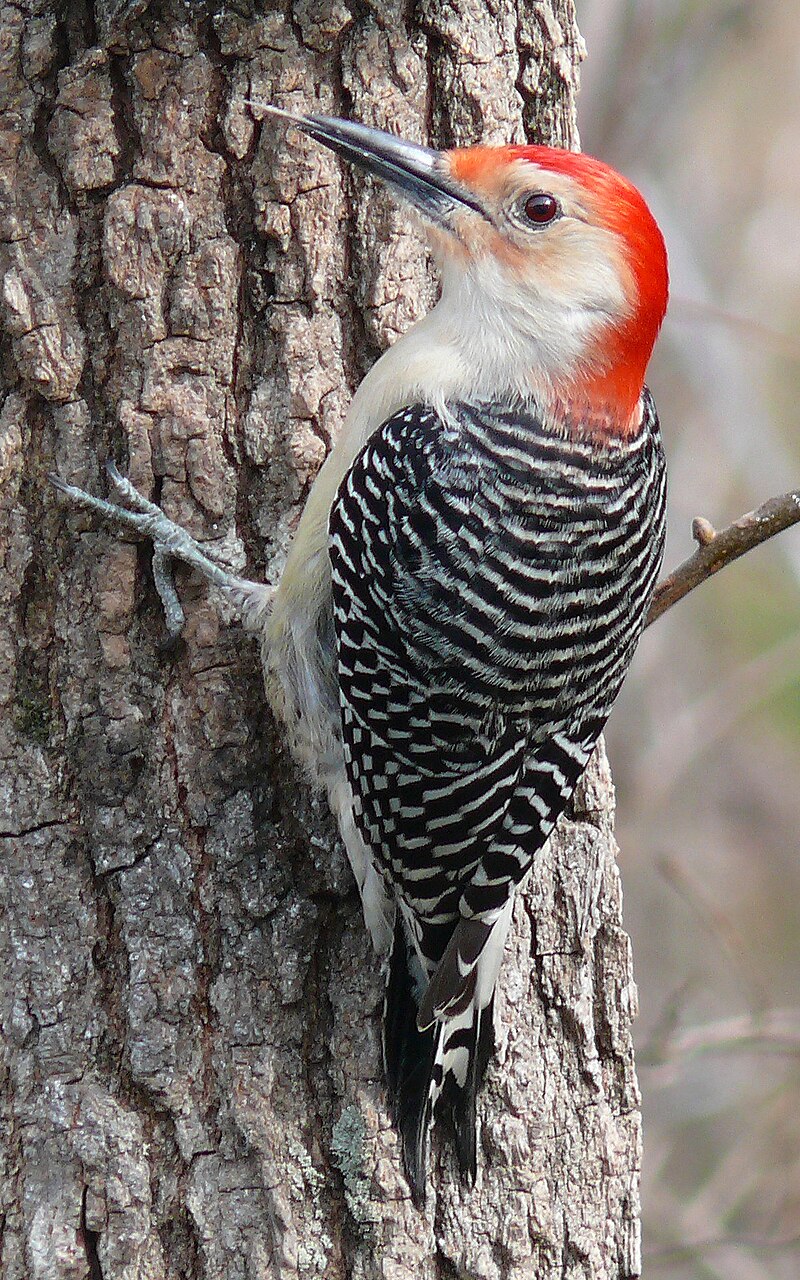Woodpeckers in Florida: Nature, Ecology, and Conservation
Wiki Article
Discover the Remarkable World of Woodpeckers: Everything You Need to Know
The world of woodpeckers is a realm filled with distinct actions, elaborate adjustments, and a varied array of varieties. From their environments and distribution patterns to their feeding routines and specialized anatomical features, woodpeckers have actually long captivated the passion of ornithologists and nature lovers alike.Woodpecker Habitats and Distribution
Woodpeckers inhabit a varied variety of environments worldwide, showcasing versatility in their distribution patterns. These resistant birds are located in forests, woodlands, savannas, and deserts throughout different continents, showing their capability to flourish in various climatic problems. In North America, for instance, woodpeckers can be identified in both coniferous and deciduous woodlands, utilizing their solid beaks to forage for pests and create nesting tooth cavities in trees. Likewise, in Africa, certain woodpecker varieties have actually adjusted to arid environments, such as the acacia timberlands, where they play a vital function in managing insect populations./https://tf-cmsv2-smithsonianmag-media.s3.amazonaws.com/filer_public/30/ac/30acf469-09cd-4fcc-a812-1aa30f477578/aprmay2024_l09_woodpeckers.jpg)
Feeding Behaviors and Diet
Among the different facets of their actions, woodpeckers display unique feeding practices and dietary preferences. These birds are largely insectivores, with a diet that includes ants, beetles, caterpillars, and other pests discovered in trees. Woodpeckers utilize their solid beaks to pierce right into the bark of trees, penetrating for insects and larvae hidden under the surface area. Along with pests, woodpeckers likewise take in nuts, seeds, fruits, and sap. Some varieties have actually specialized tongues with barbed pointers that aid them extract pests from gaps in wood.Woodpeckers are understood for their drumming habits, which serves not only to connect with other woodpeckers however additionally to locate food. The rapid drumming noise is developed by the bird pecking on resonant surface areas like dead trees or metal poles. This actions can attract insects hidden in the timber, enabling the woodpecker to identify their existence and eat them.
Unique Adaptations for Tree Climbing
In their adept search of bugs hidden within tree bark, woodpeckers have evolved remarkable anatomical functions that outfit them with unique adaptations for effective tree climbing. Among the crucial adjustments is their zygodactyl feet, with 2 toes pointing onward and two aiming backwards, giving a solid grip on tree trunks. This specialized foot plan permits woodpeckers to hold on to vertical surface areas effortlessly, allowing them to go up and down trees with agility. In addition, woodpeckers have tight tail plumes that act as a supportive prop while they climb, helping in equilibrium and stability. Their strong, chisel-like beaks are not only made use of for exploration into wood however also for clutching onto bark as they ascend tree trunks. Woodpeckers have solid neck muscles and an one-of-a-kind head framework that absorb the effect of continuous pecking, permitting them to climb up vertically without look at this site causing injury to their minds. These adjustments showcase the extraordinary evolutionary design that makes it possible for woodpeckers to browse trees with precision and effectiveness.Diverse Woodpecker Species Worldwide
With over 200 various types spread across different environments worldwide, the family of Picidae encompasses an amazing variety of woodpeckers. These birds can be found in forests, forests, savannas, and even city locations, showcasing their flexibility to various environments. From the legendary Northern Flicker in North America to the vibrant and evasive Crimson-backed Flameback in Asia, each woodpecker species displays distinct qualities in regards to plumage, actions, and environment choice.Woodpeckers differ greatly in dimension, with the petite Downy Woodpecker determining around 6-7 inches in size, while the powerful Lineated Woodpecker can reach up to 17 inches - Woodpeckers in Florida. Their beaks also can be found in different forms and sizes, showing their feeding habits. Some species specialize in drawing out insects from tree bark, like the Acorn Website Woodpecker, while others, such as the Black-cheeked Woodpecker, eat fruits and seeds

Preservation Initiatives and Obstacles
Conservation campaigns for woodpecker populaces are crucial in mitigating the influence of habitat loss and various other threats dealing with these diverse bird types. Woodpeckers face numerous challenges to their survival, mostly because of logging, urbanization, climate modification, and invasive varieties. To address these concerns, conservation initiatives concentrate on shielding and bring back woodpecker environments, executing lasting forestry techniques, and increasing understanding regarding the relevance of these birds in environments.One considerable difficulty in woodpecker conservation is the fragmentation of their environments, bring about isolated populaces that are a lot more vulnerable to termination - Woodpeckers in Florida. Guardians work to produce wild animals passages and protected areas that attach these fragmented habitats, enabling woodpeckers to relocate in between different areas for feeding, breeding, and sanctuary

Conclusion
In final thought, woodpeckers are interesting birds with unique adaptations for tree climbing and feeding actions. They can be found in diverse habitats worldwide, dealing with preservation difficulties as a result of environment loss and human activities. Comprehending their environments, diet regimens, and actions is crucial for conservation initiatives to safeguard these essential bird varieties. Additional research and conservation activities are needed to make certain the survival of woodpeckers in the wild.Report this wiki page